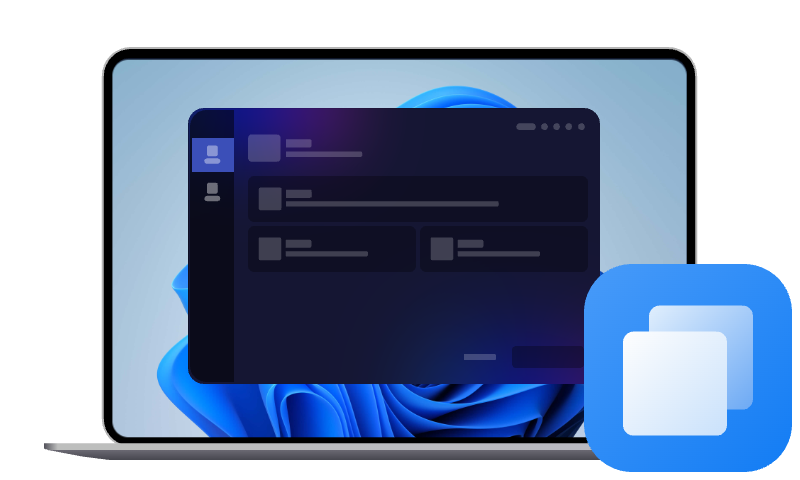Top 2 Silicon Power SSD Clone Software (with Complete Guide)
Looking for specialized cloning software after purchasing Silicon Power SSD on Window 10/11? Check out this post to get Silicon Power SSD disk cloning software free download, with step-by-step guide.
You may have purchased a Silicon Power (SP) SSD and are eager to upgrade current storage in order to reduce boot time, speed up application launches, and experience new life on your old computer.
Rather than reinstalling Windows OS and applications from scratch, a Silicon Power SSD clone software copies the operating system, apps, settings, and personal files in one smooth operation.
If you are disappointed with the limitations of Echo system cloning software, try another powerful cloning tool.
Official Silicon Power Disk Cloning Software: Review & How-to
SP partners with NTI to provide Echo system cloning software for users who want to replace old hard drive with the new SP SSDs.
Echo copies whole content of the source drive, and will automatically adjust partition sizes on the target disk if needed. Its latest feature allows users to clone disk in three types:
- Dynamic Resize (Recommended): Automatically shrink or grow the original disk’s partition to match target storage capacity.
- One to One: Retains partition structure and size. Requires the target drive to be equal to or larger than the original drive.
- User Defined: Allows to manually resize partitions on the new drive.
Here is the step-by-step guide on how to clone hard drive to Silicon Power SSD in Windows 10/11 using NTI Echo system cloning software.
Step 1. Connect the SP SSD to your computer and make sure it can be detected.
Step 2. You’ll need to go to the official website and get the Echo software downloaded. Select the right option and follow the instructions.
Step 3. Install and run the NTI Echo cloning tool. Select the preferred cloning method.
Step 4. Select the source drive and the destination drive in turn. Preview settings and click “Start”.
Step 5. Change boot order in BIOS or directly replace old drive with the Silicon Power SSD to make Windows boot from new drive.
Smart and simple Silicon Power SSD migration tool as it is, there are some limitations you cannot ignore.
- No RAID or dynamic disk support: Echo cannot handle RAID arrays or Windows dynamic volumes.
- Not compatible with Microsoft Surface devices like Surface Pro Copilot series and laptops: Certain UEFI-locked systems block Echo’s boot environment.
- Occasionally freezing or reboot loops: Some users find the cloning process stops unexpectedly or loops.
If you’re in one of the situations or just want an easy way to clone to Silicon Power SSD, try AOMEI Cloner.
Best Silicon Power SSD Clone Software Download
AOMEI Cloner is a dedicated software for disk clone in Windows PC and Server. It allows you to clone HDD to Silicon Power SSD without data loss. Here are some key features:

- Comprehensive compatibility: Supports all SATA, NVMe, and PCIe SSDs (including Silicon Power), plus HDDs, RAID arrays, and dynamic volumes.
- Flexible cloning modes: Provides intelligent clone (copy only used space) and sector by sector clone (make exact copy) based on different conditions.
- Multiple cloning features: Offers “Disk Clone” for entire disk copy, “System Clone” for OS migration, and “Partition Clone” for specific partition cloning.
- SSD alignment: Automatically aligns SSD partitions to optimize read/write performance and prolong drive life.
- Bootable media creator: Allows you to clone a system disk without booting into Windows, preventing software conflicts.
This cloning software works well on all Windows OS versions and is compatible with all brands of hard drives. Download now to have a try.
How to Clone Hard Drive with Silicon Power Cloning Software
Preparations: Connect the SP SSD via a SATA cable or a USB-to-SATA adapter. Make sure it can be detected.
Step 1. Install and start AOMEI Cloner. Click “Clone” and then “Disk Clone”.
Step 2. Select the source drive (current system disk) and the destination drive (your Silicon Power SSD) sequentially.
Step 3. Check “SSD Alignment” option and click “Start Clone”. Wait for it to complete.
Step 4. Swap the hard drive with the new cloned drive. You should be able to boot from the new Silicon Power disk.
💡 Advanced tips:
- Select “System Clone” if you want to move OS to SSD only.
- You can resize partitions or convert MBR/GPT in “Edit Partitions”.
- Make sure the target disk is equal to or larger than the source disk if you use the “Sector by sector clone” mode.
Extended Reading: Why Need Silicon Power SSD Clone Tool
Compared to clean install, disk cloning has these advantages:
- Zero reinstallation worry: Keep your current Windows, programs, and personalized settings intact.
- Minimize downtime: General cloning completes in a fraction of the time it takes to reinstall and reconfigure.
- Ideal for system upgrades: Migrate operating system to a newer or larger drive to gain better computer experience.
A Quick Look at Silicon Power SSDs' Performance
|
Form Factor |
Interface |
Capacities |
Peak Speeds |
|
2.5″ SATA III |
SATA III 6 Gb/s |
120 GB–4 TB |
550 MB/s read / 500 MB/s write |
|
M.2 SATA III |
SATA III 6 Gb/s |
120 GB–4 TB |
550 MB/s read / 500 MB/s write |
|
M.2 NVMe PCIe Gen3×4 |
PCIe 3.0 |
256 GB–2 TB |
3,500 MB/s read / 3,000 MB/s write |
|
M.2 NVMe PCIe Gen4×4 |
PCIe 4.0 |
500 GB–4 TB |
5,000 MB/s read / 4,400 MB/s write |
FAQs on Silicon Power SSD Cloning in Windows
1. Will my Windows activation or software licenses carry over after cloning?
Generally, yes. Most Windows 10/11 activation ties to your hardware signature rather than the specific drive. Some software with hardware-locked licenses may require re-authorization.
2. My SP SSD is smaller than my HDD—how do I ensure all data fits?
Use “Dynamic Resize” in NTI Echo Cloning Software or “Intelligent Clone” in AOMEI Cloner: it copies only used sectors. Before cloning, delete or move large files you don’t need, and empty the Recycle Bin to reduce used space.
3. Will cloning overwrite my SSD’s existing data?
Yes. The target disk will be wiped clean. Always back up any important files on the SSD before you begin.
4. Will Windows BitLocker encryption transfer during cloning?
Yes, but you’d better disable BitLocker on the source drive before cloning. After the clone, re-enable BitLocker on the SP SSD to ensure full encryption of the new drive.
5. Do I need to convert my SSD from GPT to MBR (or vice versa) before cloning?
No. AOMEI Cloner offers the option to change disk’s partition style during the cloning process. Just click Edit Partitions > Convert the destination disk from MBR (GPT) to GPT (MBR) to make it.
Conclusion
Migrating from a spinning HDD to a blazing-fast Silicon Power SSD need not be a headache. While NTI Echo offers a basic cloning path, its restrictions on RAID, dynamic disks, and UEFI-locked systems can leave you stranded.
AOMEI Cloner is considered as the best Silicon Power SSD cloning software, because it delivers a smoother experience with wider compatibility, SSD-specific optimizations, and an intuitive interface. Besides SP SSD, you can use it to clone HDD to WD SSD, Samsung SSD, Crucial SSD, etc. Go for it now!

